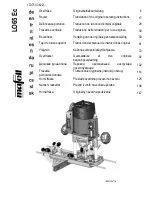
DGS-6604
m
telnet
CLI Reference Guide
892
T
telnet
The telnet command is used to login in another device that supports the TELNET
protocol.
telnet {
IP-ADDRESS | IPV6-ADDRESS} [TCP-PORT]
Default
TCP-PORT
: 23
Command Mode
Management interface or User EXEC
Usage Guideline
This command starts the telnet client function and can be used to communicate
with another device using the TELNET protocol. The telnet command is allowed
under both management interface modes and User EXEC mode. For User EXEC
mode, the outgoing physical interfaces does not include the management
interface. To use telnet in order to login to a device which can be reached only
through the management port, use the telnet command under management
interface mode by entering the mgmt-if command first.
The Telnet software supports special Telnet commands in the form of Telnet
sequences that map generic terminal control functions to operating system-
specific functions. To issue a special Telnet command, enter the escape
sequence and then a command character. The default escape sequence is Ctrl-_
(press and hold the Ctrl and Shift keys and the '_' key, the underscore). The
special Telnet commands will be displayed as follows:
Supported commands are:
e - terminate the current Telnet session
If any other key is pressed, the terminal will return to the original active Telnet
session.
Use the lowercase letter, 'e' to exit from the telnet software.
Several concurrent Telnet sessions can be opened on the switch system and
each open Telnet session can have its own telnet client software concurrently
supported.
Use "ctrl-c" to stop the connection if telnet is connecting but before the session
connection is made.
Syntax Description
IP-ADDRESS
IPv4 address of the host.
IPV6-ADDRESS
IPv6 address of the host.
TCP-PORT
Specifies the The TCP port number that telnet should use. TCP ports are
numbered between 1 and 65535. The "well-known" TCP port for the TELNET
protocol is 23.
















































